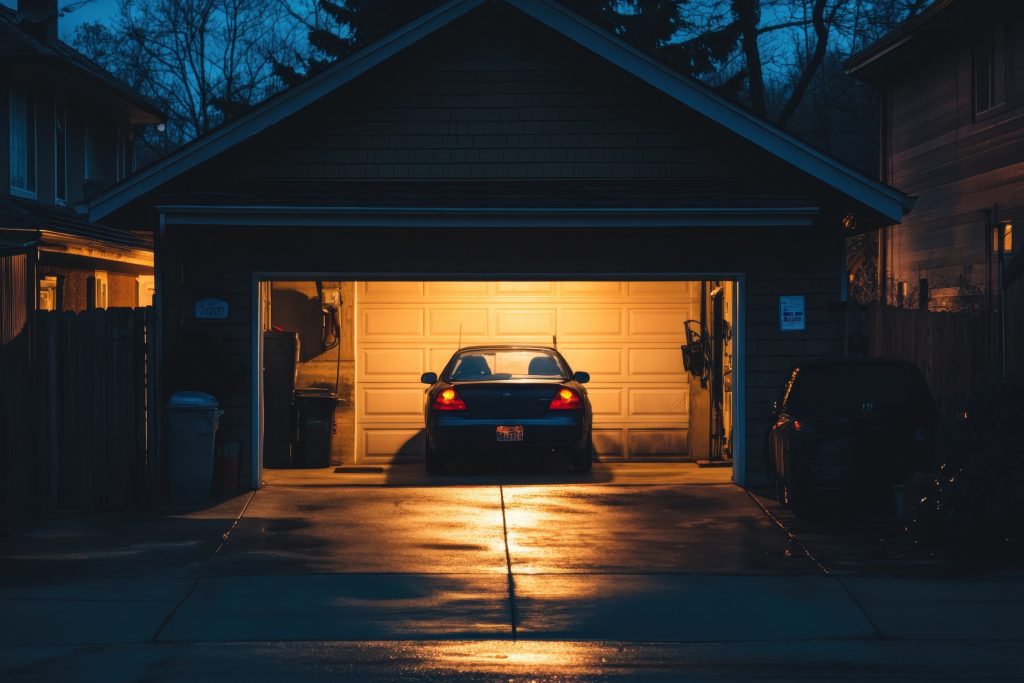
For most homeowners, the garage door is the single largest moving object in their home. It’s a marvel of convenience that we use every single day without a second thought. We press a button, and it reliably opens and closes, protecting our vehicles and providing a primary entry point to our homes. But this familiarity can breed a dangerous sense of complacency. A modern garage door system is a powerful and complex piece of machinery. A failure to maintain it properly or a simple act of carelessness can have catastrophic consequences. The most common garage door mistakes are not just inconvenient; they can lead to serious injury or even death. Understanding these risks is crucial for every homeowner.
Here are six critical mistakes that could be putting your family’s life at risk.
1. Ignoring the Auto-Reverse Safety Test
Since 1993, federal law has required all garage door openers to have a safety reversal system. This system consists of two parts: a pair of photoelectric sensors near the floor and a pressure sensor in the opener itself. If the sensors’ beam is broken or the door encounters an obstruction, it should automatically reverse direction. One of the most dangerous garage door mistakes is failing to test this system regularly.
You should test it monthly. First, place a roll of paper towels on the ground in the door’s path. The door should reverse immediately upon touching it. Second, wave a broom handle in front of one of the sensors as the door is closing. It should immediately shoot back up. If it fails either of these tests, the opener is a serious safety hazard and needs to be serviced immediately by a professional.
2. Leaving the Garage Door Remote in Your Car
This is a habit that millions of people have. You clip the garage door remote to the sun visor of your car and leave it there, even when the car is parked in the driveway. This is the equivalent of leaving a key to your house in a box on the front porch. It is an open invitation for a criminal. A thief can break your car window in a matter of seconds, grab the remote, and have immediate, quiet access to your garage. From there, they are often just one unlocked interior door away from having free rein of your entire home.
3. Not Securing the Emergency Release Cord
Every garage door opener has a manual emergency release cord, usually a red rope hanging from the opener track. This cord is designed to allow you to open the door manually during a power outage. However, criminals have developed a simple and effective technique to exploit this feature. They can use a coat hanger, slipped through the top of your garage door, to hook this cord and release the door from the outside. To prevent this, you should use a simple zip tie to secure the release lever to the opener carriage. This still allows you to pull the cord in an emergency, but prevents it from being hooked from the outside.
4. Trying to Perform a Spring Repair Yourself
The springs on your garage door are one of the most dangerous components in your entire home. Whether you have torsion springs (a large spring on a metal rod above the door) or extension springs (which run along the sides of the door), they are under an enormous amount of tension. This tension is what allows you to lift a door that weighs hundreds of pounds with one hand. If one of these springs breaks, it can release its energy with explosive and deadly force. A spring replacement is not a DIY project. This is a job that should only ever be performed by a trained and qualified garage door professional.
5. Leaving the Door Partially Open for “Ventilation”
On a hot day, it can be tempting to leave the garage door open just a few inches from the bottom to allow for some air circulation. This is a major security risk. That small gap can be all a criminal needs to get a tool, like a pry bar, underneath the door to force it open. It also allows them to see inside your garage, taking inventory of any valuable tools or equipment you may have. If you need to ventilate your garage, it is much safer to open a window or a side door.
6. Disconnecting the Opener While the Door Is in the “Up” Position
This is a particularly dangerous mistake that can happen during maintenance or a power outage. If you need to disconnect the opener using the emergency release, you should always do so when the garage door is in the fully closed position. If the door is open and one of the springs is broken or weak, the full weight of the door is being held up by the opener itself. The moment you pull that release cord, the hundreds of pounds of the door will come crashing down with immense force, capable of crushing anything—or anyone—that is in its path.
Your Garage Door Is Not a Toy
It is easy to take your garage door for granted, but it demands your respect and attention. A few simple minutes of monthly maintenance and a commitment to safe habits can prevent a tragedy. Treat your garage door like the powerful piece of machinery that it is. By avoiding these critical garage door mistakes, you can ensure that it remains a source of convenience and security, not a threat to your family’s safety.
What is your #1, non-negotiable home safety or maintenance task you do every year?
What to Read Next…
- 8 Things Attract Thieves to Your Porch and Garage
- 6 Garage Door Habits That Signal You’re Home Alone
- 8 “Innocent” Behaviors That Tell Strangers You’re Home Alone
- 10 Everyday Places Criminals Target Without You Noticing
- 9 Items Young Homeowners Leave Out—Only to Pay for Later
The post 6 Garage Door Mistakes That Could Literally Put Your Life at Risk appeared first on Budget and the Bees.







